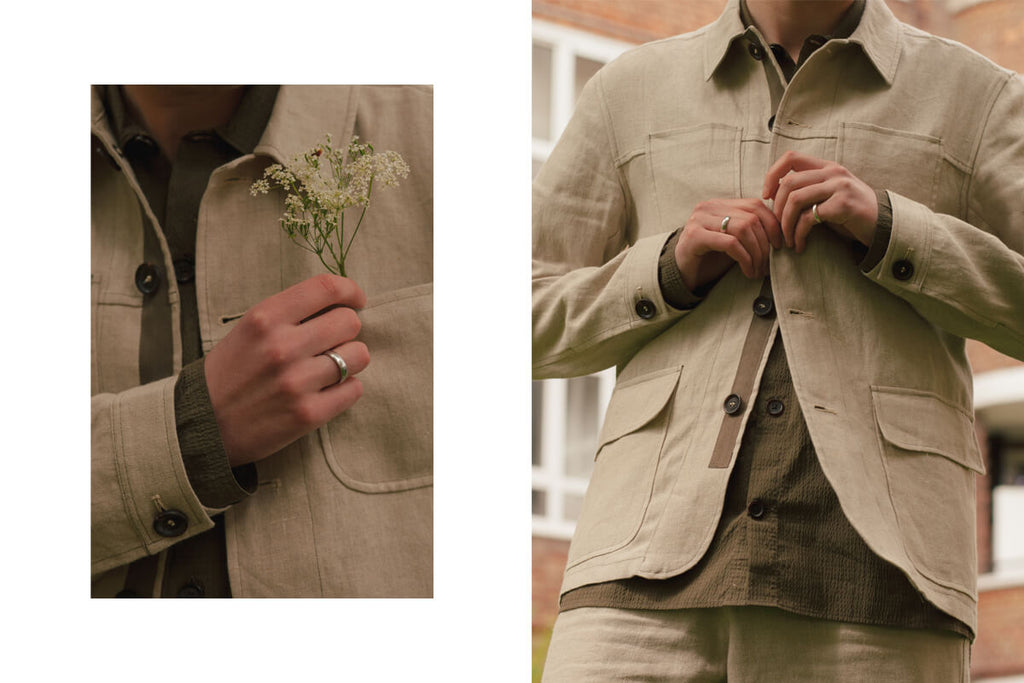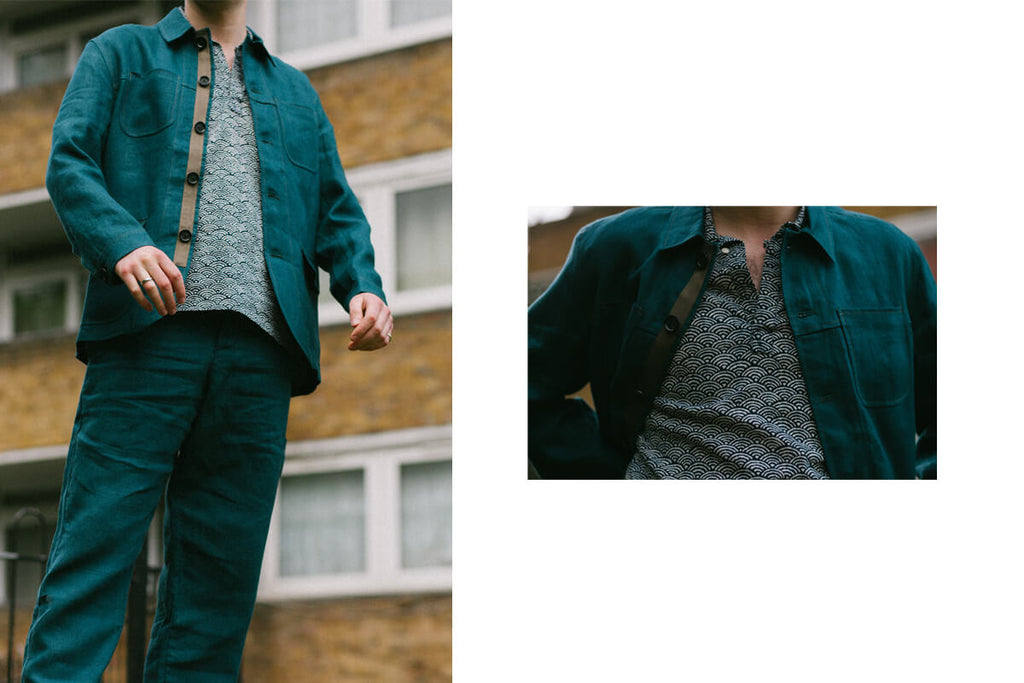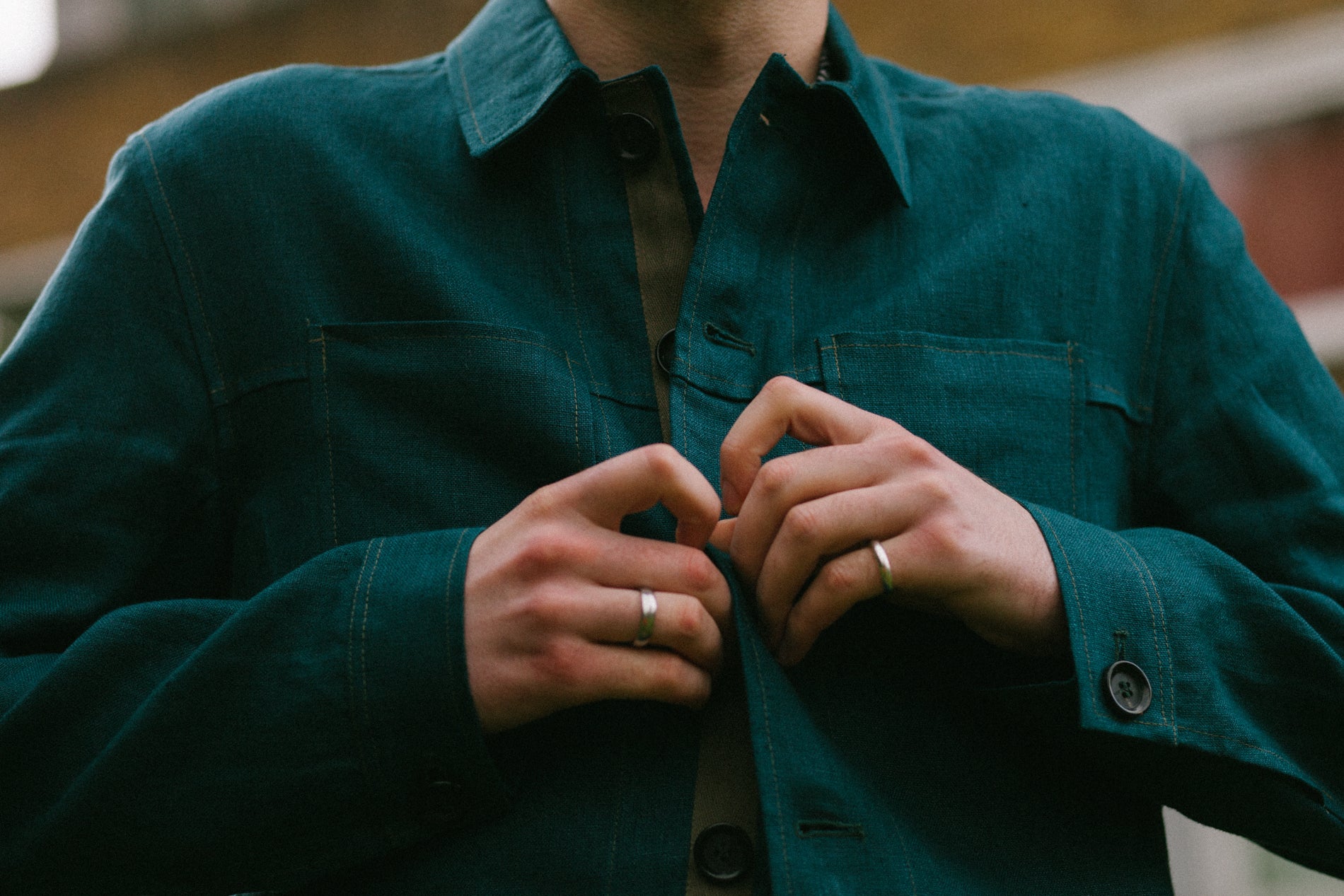Linen is a fibre that has been used for centuries and is known for its soft, breathable qualities. But, it’s also absolute marmite, because on the flip side of the aforementioned soft, breathable qualities is the fact that it creases quicker than an origami convention. And that’s a problem because we’ve been pathologically conditioned to seek out creases and steam iron the living hell out of them. But linen sings from a different hymn sheet. It laughs in the face of creases. In fact it positively encourages them. The cotton guy likes things neat and just so. The linen guy, well he just lets it happen. Embrace the crumple! Live life on the edge (or many edges in linen’s case).
But seriously, linen is a fantastic fabric and has been gaining in popularity over the years as menswear codes have become more relaxed. So it creases. Get over it. That’s why it’s so great, you see. It can be tailored in such a way that it maintains structure and has a beautiful drape, especially over time as it softens to your contours. But it also has that ability to look at all times casual. Like louche wealthy Italian casual. Like French playboy in St Tropez casual. Like.. well, you get the idea.

Then there’s the practicality of it, especially as a summer fabric. It’s extremely lightweight, and the open weave does an excellent job of keeping you cool on hot days. ‘But what about the sweat patches!’ I hear you cry. Well, you won’t find a faster drying natural fabric than linen, which also makes it a perfect choice for summer holidays.
This season, we've created more garments in linen than ever before. Each of our trouser styles has multiple linen options to choose from, while the fabric is perfect for many of our lightweight summer jackets, such as our three-pocket Coram jacket or our Cowboy jackets. Linen lends itself wonderfully to these chore jacket styles precisely because it is comfortable, breathable, and still retains a smart-casual workwear shape. On the smarter end of smart casual, we've also created the Brookes jacket in a stunning Irish linen and with matching trousers, offering a really easy suiting style for hot summer days.

Aside from the functional and superficial benefits of linen, there are also myriad environmental ones. Cue our Head of Sustainability, Bleue Wickham-Burnham: “Linen, which is derived from the flax plant, has a low environmental impact due to its low water and insecticide requirements,” he says. “For European brands producing in Europe, its footprint is further reduced by its limited travel requirements. A large percentage of the world’s linen is grown within Europe, with Belgium producing some of the best quality yarns.”
The life-cycle of linen
This bit’s for the horticulturally inclined, so grab a seat and a notebook and pen… As a seed, flax seeds are gently pressed into the soil using a large roller that places them approximately 2cm below the ground where sufficient amounts of moisture can be absorbed, allowing the seed to successfully germinate. The best time to plant the seeds varies year-on-year as the success of the crop is dependent on temperatures not dropping below 3 degrees Celsius and no early exposure to heavy rain. Farmers must be aware and in-tune with weather patterns to produce a good crop. Environmentally progressive growers will only sew flax on the same plot every 7 years as this allows for crop rotations to keep a balance of nutrients and maintain healthy soil. After 100 days, the flax plant typically reaches a height of 1 metre. When it flowers, it does so for only a single day. After this, the field swiftly moves back to its former green glory. Following the flowering period, each plant develops seed pods which are used for food, linseed oil and for sewing next year’s crop.

Now that the flax is ready to be harvested, plants are carefully pulled from the ground. They are pulled instead of cut, as some of the most valuable fibres extend into the root of the plant, which would be lost in the cutting process. Pulled flax is then placed side-by-side in rows throughout the field.
Although the plant has been harvested it’s still not ready to be processed yet. The plant is left in the field for up to 6 weeks to go through the natural process of ‘retting’. Retting is a process of letting the flax be exposed to dew, rain and sunshine. This process allows micro-organisms to dissolve the pectin to loosen the fibres and contribute to linen’s beige colour.
Once retting has finished, the plants are dried and move to the ‘scutching’ phase, where the flax is moved between large rollers which breakdown the woody stem and separate the interior fibres (the linen!) from its external shell. This is a waste-free crop and the external shell of the plant is used in chipboards and animal bedding, while the fibres, which don’t reach high enough quality, are used for coarser fabrics or paper. For the final part of this process, linen has the same steps as many other fibres; taking on a new form as it moves through spinning, dyeing and weaving.
As you can see there is much more to linen than its breathability! Before it even gets to be woven or made into a garment it already goes through a magical process which thrives from working in line with nature. In time we aim to produce collections that are 100% ecological, and linen will play a huge part in that. This season was our most environmentally sustainable yet.
